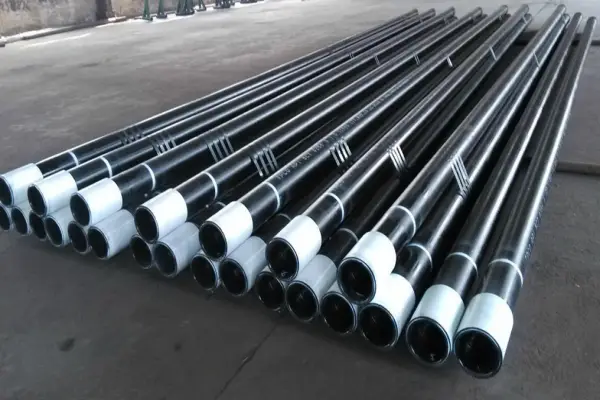Casing Pipe vs. Carrier Pipe: Understanding Their Differences
In pipeline engineering, the terms "casing pipe" and "carrier pipe" often create confusion. Though related, they serve distinct purposes. This article explains their differences to help professionals make informed decisions.Casing pipes and carrier pipes might sound similar, but their structure and functions differ significantly. This article highlights their unique roles, materials, and applications, ensuring clarity for industry professionals.
1. What Is a Casing Pipe?
A casing pipe is crucial in oil well drilling and is categorized as
OCTG (Oil Country Tubular Goods). It features thicker walls, enabling it to withstand high pressures and stabilize the well wall.
Additionally, cement is often used to fill the annular space between the casing and the well wall. This process isolates geological layers, preventing fluid mixing between strata. Consequently, it ensures the purity of extracted oil and gas resources.
Casing pipes adhere to strict industry standards, such as API SPEC 5CT, to guarantee quality. They are typically made from carbon steel or stainless steel for enhanced durability and performance.

2. What Is a Carrier Pipe?
A carrier pipe is the main conduit that transports fluids, gases, or other materials. Unlike casing pipes, these pipes are directly involved in the transfer process. Materials such as steel, plastic, or concrete are commonly used for carrier pipes, depending on the transported substance.
3. Key Differences Between Casing Pipe and Carrier Pipe
|
Feature
|
Casing Pipe
|
Carrier Pipe
|
|
Purpose
|
Stabilizes well walls during drilling
|
Transports liquids or gases
|
|
Material
|
Carbon steel or stainless steel
|
Various materials based on fluid type
|
|
Primary Use
|
Oil well drilling
|
Municipal and industrial fluid systems
|
|
Standards
|
API SPEC 5CT
|
Depends on application and industry
|
4. Applications of Casing and Carrier Pipes
Casing Pipes: Essential for oil well drilling, they prevent fluid contamination and ensure resource purity.
Carrier Pipes: Widely used in water supply systems, irrigation, and industrial transport, serving diverse fluid transfer needs.
5. Why Both Are Necessary
Using both pipes ensures the pipeline’s integrity and functionality. The casing prevents external damage, while the carrier focuses on transport. Together, they enhance the pipeline system’s safety and efficiency.
6. Conclusion
Though
casing pipes and carrier pipes may share a similar name, their purposes and applications differ significantly. Casing pipes are indispensable in oil and gas exploration, providing structural support, isolating geological layers, and ensuring resource purity. On the other hand, carrier pipes are versatile conduits for transporting liquids in various industries, playing a critical role in water supply and fluid transportation systems.By understanding these differences, professionals can select the appropriate pipe type to meet their specific project requirements.






 English
English Español
Español بالعربية
بالعربية











 Phone :
Phone :  Whatsapp :
Whatsapp :  Email :
Email : 


